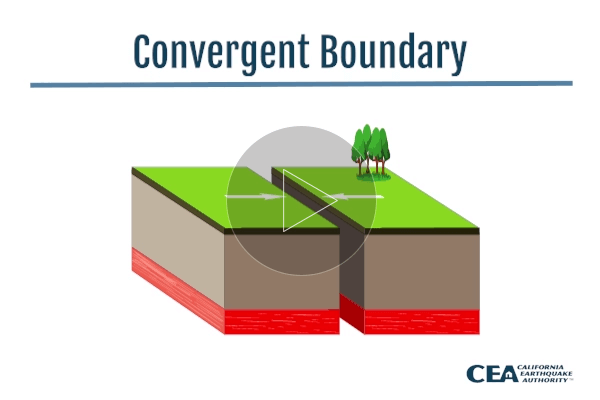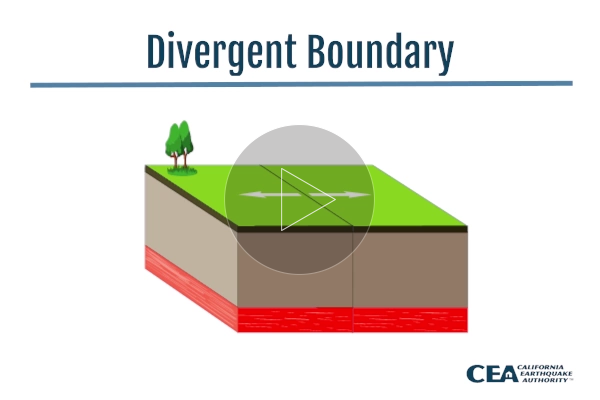Introduction to Plate Tectonics
Tectonic plates, large slabs of rock that divide Earth’s crust, move constantly to reshape the Earth’s landscape. The system of ideas behind plate tectonics theory suggests that Earth's outer shell (lithosphere) is divided into several plates that glide over the Earth’s rocky inner layer above the soft core (mantle). The plates act like a hard and rigid shell compared to Earth's mantle. The mantle sits between Earth's dense, very hot core and its thin outer layer, the crust.
Plate tectonics has become the unifying theory of geology. It explains the earth’s surface movement, current and past, which has created the tallest mountain ranges and the deepest oceans.
Some scientists think that the shifting plates, which have the ability to help adjust our planet’s temperature over billions of years, are a vital element for life.
Watch this video animation for more information.
What are tectonic plates?
Tectonic plates are gigantic pieces of the Earth's crust and uppermost mantle. They are made up of oceanic crust and continental crust. Earthquakes occur around mid-ocean ridges and the large faults which mark the edges of the plates.
The World Atlas names seven major plates: African, Antarctic, Eurasian, Indo-Australian, North American, Pacific and South American.
California is located at the seam of the Pacific Plate, which is the world’s largest plate at 39,768,522 square miles, and the Northern American plate.
Tectonic plates map showing the Ring of Fire
The Earth is always on the move due to the motion of the tectonic plates. Seven of the major plates make up most of the seven continents and the Pacific Ocean. They are named after nearby landmasses, oceans, or regions.
What is the Ring of Fire?
The Ring of Fire is in the Pacific Ocean. It is made up of a string of volcanoes, deep ocean trenches, and high mountain ranges. It is the site of earthquakes around the edges of the Pacific Ocean.
The tectonic plates map of the Earth shows where mountain building, volcanoes, and earthquakes have occurred.
how many tectonic plates are there?
There are major, minor and micro tectonic plates. There are seven major plates: African, Antarctic, Eurasian, Indo-Australian, North American, Pacific and South American.
The Hawaiian Islands were created by the Pacific Plate, which is the world’s largest plate at 39,768,522 square miles.
what is a tectonic plate boundary?
A tectonic plate boundary is the border between two plates. The tectonic plates slowly and constantly move but in many different directions. Some are moving toward each other, some are moving apart, and some are grinding past each other. Tectonic plate boundaries are grouped into three main types based on the different movements.
types of plate boundaries
The study of plate boundaries and their motion is like figuring out a constantly moving jigsaw puzzle. Understanding the types of plate boundaries is vital to understanding the Earth’s history. Subduction zones, or convergent margins, are one of the three types of plate boundaries.
The others are divergent and transform margins.
Subduction Zone
At subduction zones, a convergent boundary occurs when two tectonic plates push together. When an ocean plate and a continental plate collide, the ocean plate slides under the continental plate, and bends downward.
Divergent Margin
A divergent margin occurs when two plates are spreading apart, as at seafloor ridges or continental rift zones such as the East Africa Rift. Molten rock rises from the Earth’s center to fill the gap.
Transform Margin
Transform margins mark slip-sliding plates, such as California's San Andreas fault. The San Andreas fault marks the location where the North America and Pacific plates grind past each other in a horizontal motion.
The plates do not slide smoothly, but build tension and release it in the form of an earthquake.
how do tectonic plates create earthquakes, volcanoes & mountains?
The Earth’s surface is active according to tectonic theory, moving as much as 1-2 inches a year. The many tectonic plates shift and interact all the time. This motion reshapes the Earth’s outer layer. Earthquakes, volcanoes and mountains are the result of this process.
Also at work are the roles of convection and gravity:
- Scientists have discovered that the continents have come together and spread apart at least three times in the Earth’s history. Geologists believe this motion is driven by convection in Earth’s mantle which causes hot rock to rise and cooler rock to sink.
- When the denser tectonic plate dives beneath another plate it is due to the high energy by the Earth’s gravity that pushes into the mantle. Earth’s tides, which are caused by a gravitational tug of the Moon and the Sun, also put extra strain on geological faults.
how to prepare for an earthquake
Nothing can prevent the next major California earthquake from happening. The key to being safe during an earthquake is preparation. While an earthquake safety kit will be of help after an earthquake, the planning conversations you have with your family members before an earthquake are most important.
Create an earthquake safety plan for you and your loved ones.
- Identify safe places in each room of your home.
- Practice Drop, Cover and Hold On with each member of your household.
- Make or purchase an earthquake safety kit.
Consider a seismic retrofit which involves strengthening your home’s foundation to make it more resistant to shaking. CEA offers premium discounts for houses and mobilehomes that have been retrofitted. Find out about grants to help for retrofits under the Earthquake Brace + Bolt program, and the CEA Brace + Bolt program.
Understanding Geologic & Structural Risks
Find about the potential geologic threats to your home in case of a major earthquake. The violent shaking from earthquakes can:
- Rupture the earth.
- Trigger landslides.
- Turn the surface of the earth into liquid.
If your home was built before 1980, you may have structural risks that could affect your safety.
Personal Preparedness Guidelines
Follow the Seven Steps to Earthquake Safety. Decrease your risk of damage and injury from a major earthquake by identifying possible home hazards:
- Tall, heavy furniture that could topple, such as bookcases, china cabinets, or modular wall units.
- Water heaters that are not up to code by being strapped could rupture.
- Stoves and appliances that could move enough to rupture gas or electrical lines.
- Hanging plants in heavy pots that could swing free of hooks.
- Heavy picture frames or mirrors over a bed that could fall while you are sleeping.
- Latches on kitchen cabinets or other cabinets that will not hold the door closed during shaking.
- Breakables or heavy objects that are kept on high or open shelves could fall and break causing additional damage and safety hazards.
- A masonry chimney could crumble and fall through an unsupported roof.
- Flammable liquids, such as painting or cleaning products, would be safer in a garage or an outside shed.
is your house at risk for earthquake damage?
Do you know about the primary geologic hazards where you live? This information could affect your family’s and home’s safety during an earthquake. Visit CEA’s county risk map to find out if you live near an active fault.
Your earthquake hazard and risk depends on the location of your home, your home’s construction, and your home’s location near an active fault zone. Other factors include:
- The population density in your community.
- Building codes.
- Your family’s emergency preparedness.
If your home was built before 1980, it may also be vulnerable to serious structural damage. With safety planning, reinforcing the structure of your home, securing your personal property, and buying earthquake insurance, you stand a better chance of riding out the next California earthquake.
Learn how to prepare your home
Sources Consulted:
- LiveScience: Plate Tectonics
- National Geographic: Mantle; Plate Tectonics, Ring of Fire
- USGS: Plate Tectonics; Plate Tectonics Mapping
- Geology.com: Plate Tectonics




